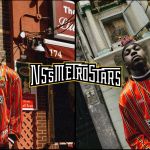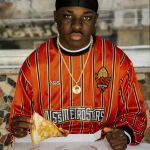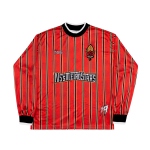
The American summer of 1994 doesn't just end in Pasadena. For any fan or simple curious of Italian football, the Baggio penalty that ends high above the crossbar of the goal defended by Taffarel, his hands on the hips of a Diadora jersey with jacquard patterns and the tail hanging on the number 10, will be able to also be the only memories of that season. But in the summer of 1994 American way or do football was born. Or soccer, as it is called on the other side of the Atlantic.
The MLS was in fact founded a few years earlier, precisely in function and as a bargaining chip for that World Cup. It is the moment when America is under the illusion that MLS could be the winning move to bring American football to the same level as the NFL, NHL and NBA, in which the American entertainment model tries to be lowered on soccer. It will not work, because the shout-outs are a galaxy too far from what football in the 90s is used to, but the MLS has the credit of - also thanks to the exoticization process that USA '94 had put in place - to be recognized for its aesthetics. Lalas, goalkeeper uniforms or the aesthetics of the New York Metrostars are part of a process of increasing the appeal of football in a completely opposite way to that of the European terrace and hooligans aesthetic.




In 1994, in New York, in LaFayette Street, a store, an entire culture, was born, which would revolutionize the concept of streetwear forever. Supreme - which, ironically, in its colors and inspirations, reminded us of USA 94 - had the merit of creating a culture and gradually bringing it closer to the mainstream. Just what MLS has never been able to do. But if streetwear was born in the USA, it is also here that the first mixes between it and football take place. In 2014 PUMA created a kit for the World Cup in collaboration with ALIFE, a few years later it is the turn of KITH who converses with adidas in the realization of the kits for the Cobras. In both, Florencia Galarza is the face and soul of the works. Galarza is a DJ, content creator and former professional footballer (from Boca Juniors and Argentina), formerly part of the Been-Trill collective which included Virgil Abloh and Heron Preston.
«When I was younger, I lived in this situation where I was constantly immersed in streetwear. It was the 90s and people wore basketball jerseys everywhere, they only wore Jordan and nobody, really nobody, was playing soccer. Then I would go home and football was actually part of my life, in all respects ». These are years in which football is still associated with Europe, and in particular with Italy. In the Sopranos, the HBO series that rewrote all the aesthetic canons of the time, football is above all a business for Italian-Americans, who proudly wear the jerseys of Napoli, Juventus and Lazio.
It is true that these are the same years in which Serie A is experiencing its maximum splendor, both on the pitch and as a system. These are the years of fashion shows in Italia 90, as Florencia Galarza points out to nss, when it is feared that the relationship between football and streetwear could have been born in the USA «I don't know if it's a correct reading, I'm sure there have been many experimental attempts in Europe much earlier, starting with Italia 90, to the collaboration with Carrera, or what Bikkemberg did». The idea that the union between football and streetwear may have originated in the United States is, in fact, very difficult to accept. Diego Moscosoni, Creative Director of Nowhere FC has a similar, albeit slightly different, opinion: «Perhaps the US has this incredibly diverse population of immigrants who grew up with football and are now at an age where they can express their full potential. The recipe is all there. In addition, places like NY or LA or San Francisco are generally great spaces to share ideas with the world and that is why very often these things start from the USA. But there is a whole category of these ideas that come from other places, like Gosha, Soph FCRB, Spezial and others that start well before ours. I remember that Supreme made a jersey with Umbro in 2005. So I see all of this as something that revolves around the US mainstream from a corporate fashion point of view but which in reality has a much more global breath».

A trend, that of soccer jerseys as a pure element of style, which before reaching the dimension of PSG and Jordan and Juventus Palace made its bones in amateur football, through projects such as Nowhere FC, Calcetto Eleganza, Le Ballon, Soho Warriors which center their entire existence around the concept of jersey: «if we take into consideration the cities where these projects are born, NY, Milan, Paris and London, where people really wear clothes. So this roughly tells us the reason for this phenomenon. If you put these cities together you have pretty much all the fashion cities in the world. I would add Nivelcrack and Liga Toquio, with Seoul and Tokyo». A trend within which there is also a trend towards the enhancement of women's football, as Florencia Galarza or the work of Season Zine demonstrates: «I often try to think of the existence of men who create particular contents such as those made by me or Felicia Pennant (the founder of Season Zine, ed), but there aren't many. Among the professionals Hector Bellerin, who is of the new generation, is perhaps the only one who manages to combine the two worlds. I don't know why this happens, certainly the hyper-competitive nature of men's football puts aside everything else».
An attitude that is changing and is destined to change more and more, as evidenced by the opening of the clubs to collaborations with streetwear brands, which brings football closer to what basketball was in the 90s. What is still missing is the creation of a shared imaginary, such as that carried out by the NBA or the NFL: something that the MLS has never been able to carry out and that does not seem to have the possibility to do. Galarza and Moscosoni agree that the relationship between football and fashion will always grow at more exponential levels, sooner or later becoming the norm. «Everything has already been done, it's just a matter of evolving trends and making them different. I think women will play a very important role, I don't know how yet, but it will happen. Football is a global sport but I believe that in the US it will come to a point where it will match football and basketball as a global influence. We will begin to see more people approaching football». A bit like it was for streetwear, the future of football in America and of the relationship between the two seems to be able to evolve only in one direction, which could contemplate all phases of the explosion of the street: from resell to logomania, passing through collaborations. The creation of a global football aesthetic, on the other hand, has only begun.


Credits
Napoli shooting
Talent J Lord
Photographer Gaetano De Angelis
Styling Francesco Tizzano
New York shooting
Talent Daniele Paudice
Photographer Salim Langatta


























































